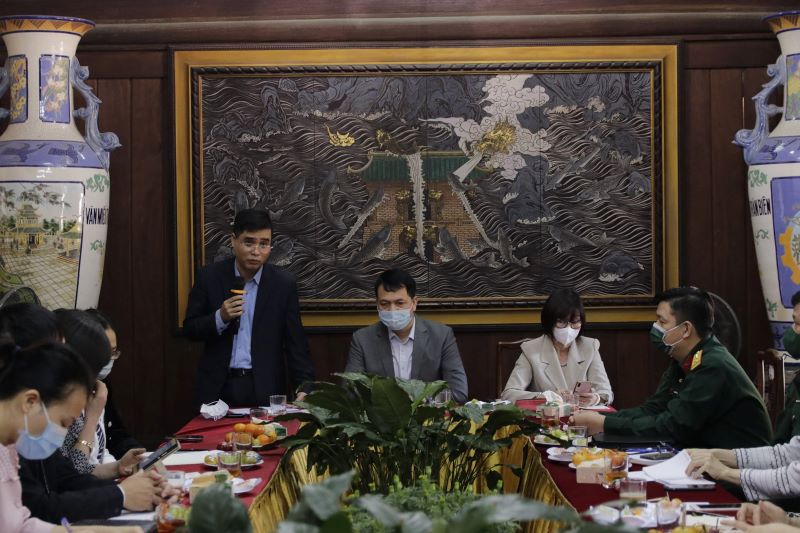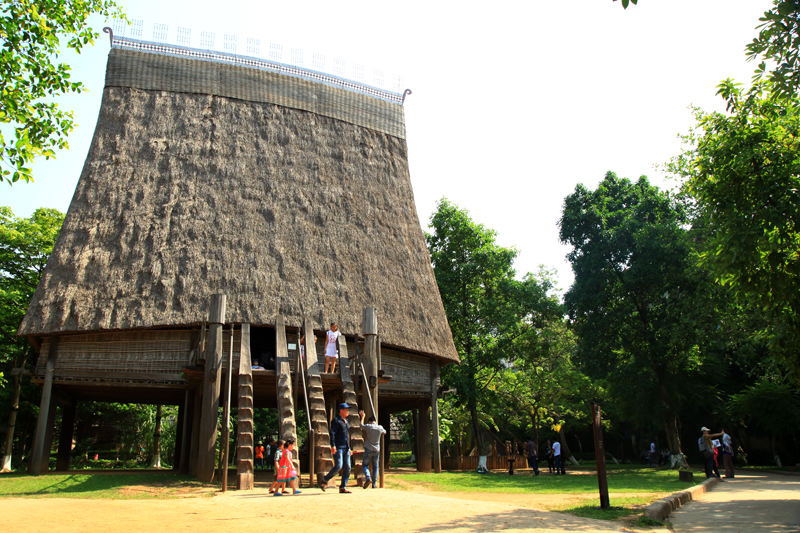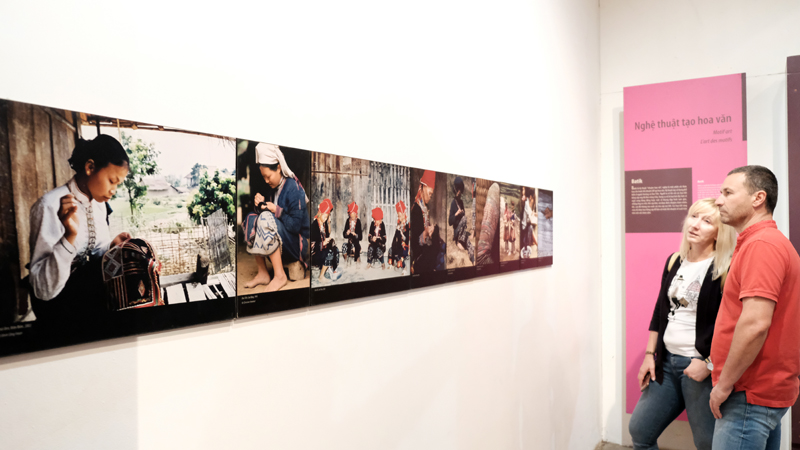Proposal for a walking space in the area of Temple of Literature
The area surrounding Temple of Literature will be pedestrianized where cultural activities will organized in the post-pandemic period.
The proposal was put forth at a recent seminar themed “developing cultural products for tourism in the post-Covid-19 pandemic period at museums and relics in Hanoi”.
The seminar was held at the Temple of Literature relic with the participation of the relic management board.
| An Ao dai show was organized at Temple of Literature relic before the Covid-19 pandemic. Photo: The Hanoi Times |
In addition to visiting tangible places, tourists also want to learn about intangible values at the destinations through experience and discovery activities, which encourage them to come back again.
According to Le Xuan Kieu, Director of the Van Mieu-Quoc Tu Giam Center for Cultural and Scientific Activities, the 12,000-square-meter Lake Van area with the water surface and an islet should be harnessed. The Center is building Phuong Dinh House at Kim Chau Mound here.
Kieu also said that the Center is planning to submit a proposal to Hanoi’s and Dong Da District’s authorities on making the streets of Van Mieu and Quoc Tu Giam a weekend walking space - a cultural ecosystem with cultural activities related to the Temple of Literature to be held.
With such orientation, the Center is developing many products and activities to be organized at Lake Van and Giam Garden. At the Quoc Tu Giam compound, the management board will organize exhibitions as well as activities that introduce visitors to the historical values and academic traditions of the relic.
Deputy Director of the Department of Cultural Heritage (Ministry of Culture, Sports and Tourism) Pham Dinh Phong gave a speech at the seminar. Photo: Temple of Literature |
In particular, the Center is developing a night tour to exploit the beauty of Temple of Literature at night, adopting the 4.0 technology, to tell the history of Vietnamese education.
the tour, together with nighttime products of Hoa Lo Prison and Thang Long Imperial Citadel will create uniqueness for tourism in Hanoi.
Currently, museums such as the Vietnam National Museum of History, Military History Museum, Vietnam National Fine Arts Museum, Vietnamese Women’s Museum, among others, are also designing many creative and novel activities, focusing on enhancing the experience of visitors.
An Thu Tra, Deputy Head of the Gallery and Public Communication of the Vietnam Museum of Ethnology, said that in the context of the pandemic, the museum's leaders identify small groups and families as potential visitors, thus focusing on designing products for these customers.
| The outdoor space of Vietnam Museum of Ethnology. Photo: Pham Hung |
Taking advantage of the green space at the museum, they have organized experience activities for visitors such as fishing in an artificial stream or learning about traditional culture if they want to become fishermen for a while. The Museum has even actively brought these activities to schools instead of waiting for school children to come to the museum.
Thanks to the creativity, in the past weekend, the Museum of Ethnology welcomed 500 visitors, which is not many, but still a significant number during this time of the pandemic.
Applying technology in developing new products
The application of new technology has been applied aggressively in recent times in developing tourism products and promoting the destination's image in the time of the pandemic. Technology helps visitors explore museums and relics without visiting in-person, or offer another option research about the destinations if they plan to make a visit.
Nguyen Thu Hoan, Deputy Director of the Vietnam National Museum of History, said that it’s not easy to apply technology to the operation of the museum but it’s necessary. The Museum of History is one of the attractions that effectively carry out this task, which is highly praised by many. However, the most important thing when applying new technology is still the human factor and the preparation of attractive content to attract visitors.
| Foreign visitors to Vietnamese Women’s Museum before Covid-19 pandemic. Photo: Pham Hung |
The Vietnamese Women’s Museum is also focusing on the 360-degree interactive tour product. Remarkably, this tour integrates a regular display system and an audio guide in three languages: Vietnamese, English, and French.
According to Nguyen Thi Hai Van, Director of the Women’s Museum, from the point of view of travel businesses, at the same time with digitization, museums and relics still need to focus on physical tours.
According to Pham Dinh Phong, Deputy Director of the Department of Cultural Heritage – Ministry of Culture, Sports and Tourism, when applying the 4.0 technology, museums and relics need to learn from the successful models and avoid the case that the technology becomes obsolete shortly after being applied. The technology could be suitable at this time of the pandemic, but in the long run, digitized tour products cannot replace the in-person experience.
Even though the Covid-19 pandemic has had a strong impact on tourism, museums and relics can turn the threats into opportunities for them to rebuild their image, laying the foundations for sustainable growth, continued Phong.

.jpg)













